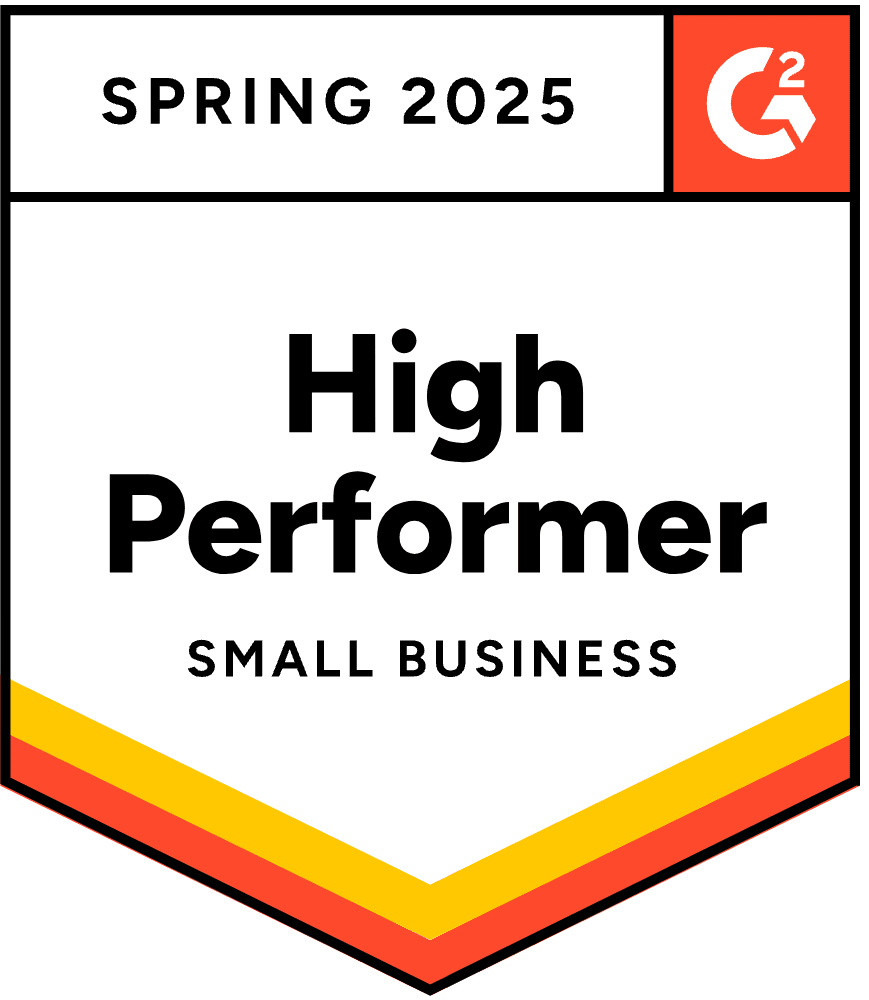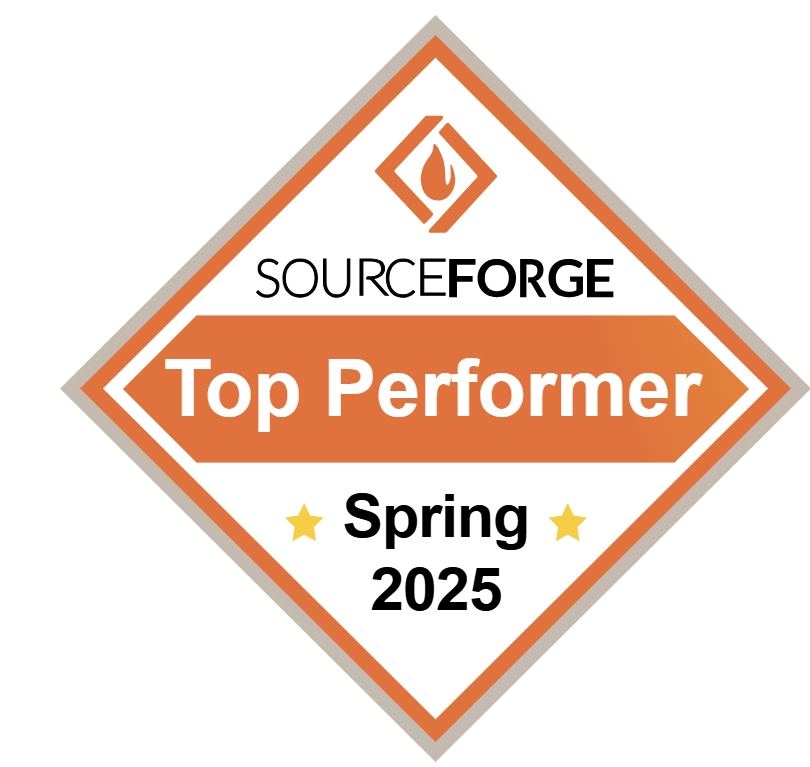- Blog
- 7 Countdown Timer Popup Examples & Tips on How to Create One
7 Countdown Timer Popup Examples & Tips on How to Create One
-
Barbara Bartucz
- Conversion
- 6 min read
Table of Contents
We’re all familiar with the feeling of having a ticking clock in front of us… tick… tick…
We get antsy, we feel the pressure, and we want to take action quickly.
That’s the FOMO (fear of missing out) effect.
You’ve probably encountered a website that uses a countdown timer popup to create this same urgency.
These popups are powerful marketing tools that can significantly boost conversions. In this article, we’ll show you 7 countdown timer popup examples to inspire you, talk about how to create effective countdown timer popups, and share some best practices.
Are you ready?
What is a countdown timer popup?
Let’s start by clarifying what a countdown timer popup is.
Countdown timer popups are website overlays featuring an on-screen timer. They count down to a specific event or deadline.
They create a sense of urgency, encouraging people to act before a limited-time offer disappears. Think flash sales, early access, or one-day-only discounts. Ecommerce sites use them all the time to boost sales and conversions.
Countdown timer popups are powerful motivators, nudging visitors to take immediate action with a simple urgency message: potential buyers have to act now or risk missing out.
How effective are countdown timer popups?
Studies show that countdown timers significantly boost popup conversion rates.
Here’s the stat to prove it: popups with a countdown timer have an average conversion rate of 14.41%, compared to just 9.86% for those without one.
That’s a 46% increase in conversions simply by adding a ticking clock! Totally worth it, right?
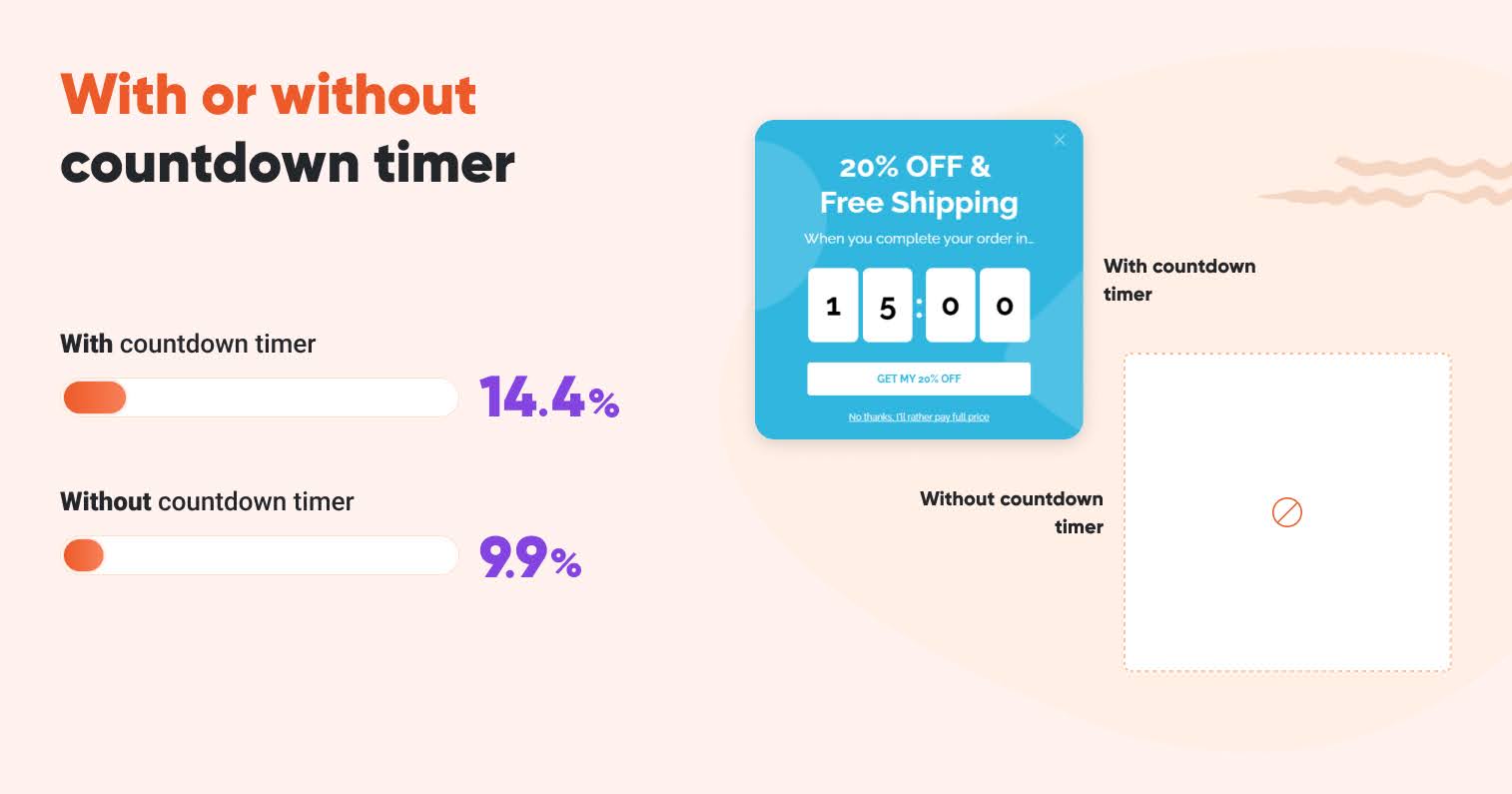
7 countdown timer popup examples to inspire you
We’ve established that countdown timer popups are powerful, but how can you use them creatively?
Here are 7 inspiring examples of countdown popups from various brands, showcasing their unique applications:
1. The Turmeric Co.
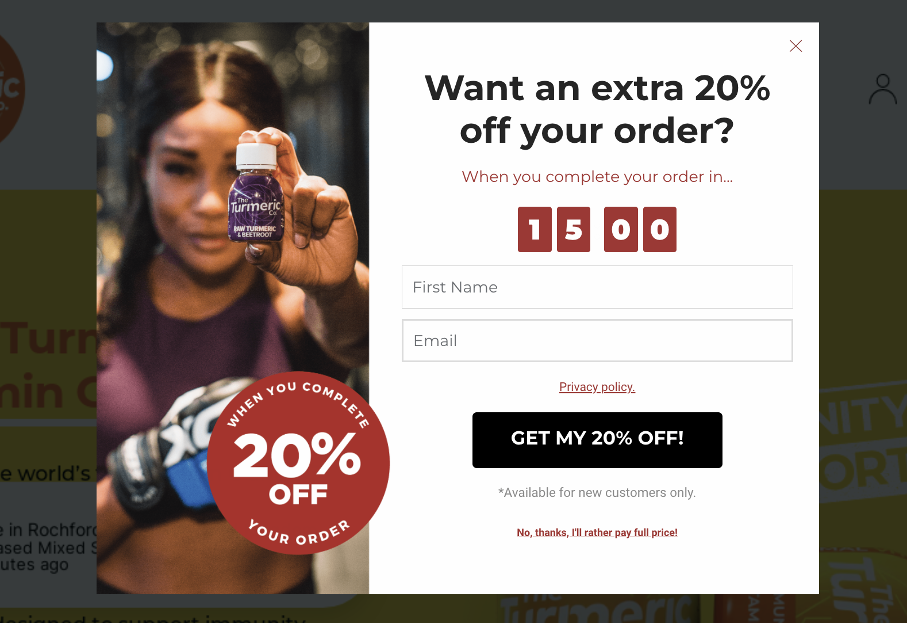
Our first countdown popup example is from the Turmeric Co.
They added a timer on a cart abandonment popup promising an extra 20% off if the new visitor checks out within 15 minutes. They only ask for first name and email address, so the visitor can finish the process in a few clicks.
This popup timer campaign had a 28.76% conversion rate, which proves the effectiveness of showing the right message at the right time—with a dash of urgency.
2. Indestructible Shoes
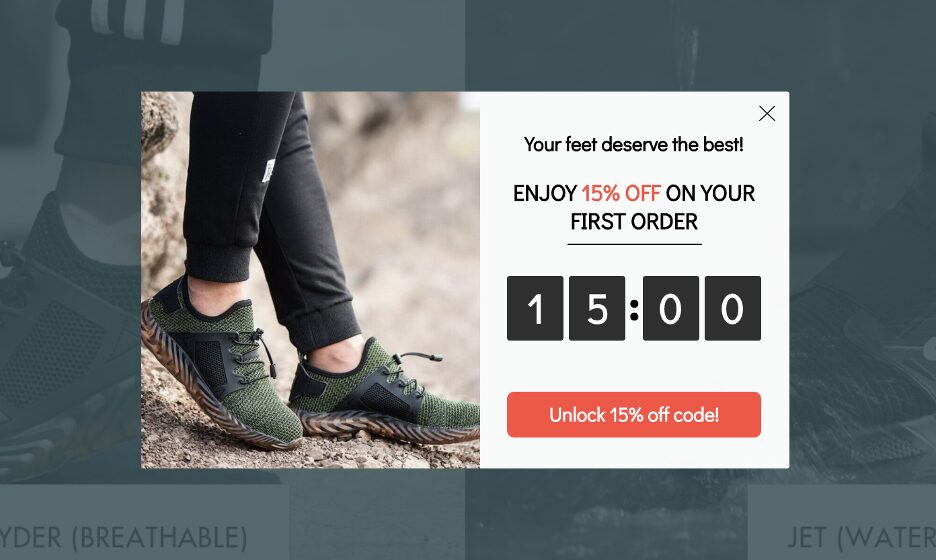
Our second example is from DTC brand Indestructible Shoes. They implemented a countdown popup for new visitors to convert more potential customers.
Their popup headline, “Your feet deserve the best,” uses emotional language to connect with the customer and build brand value. This strategy plays on the desire for quality products and motivates viewers to act before the opportunity disappears.
They also put a big emphasis on the timer itself. It’s visually striking and impossible to miss, reinforcing the urgency of the offer.
3. Kiss My Keto
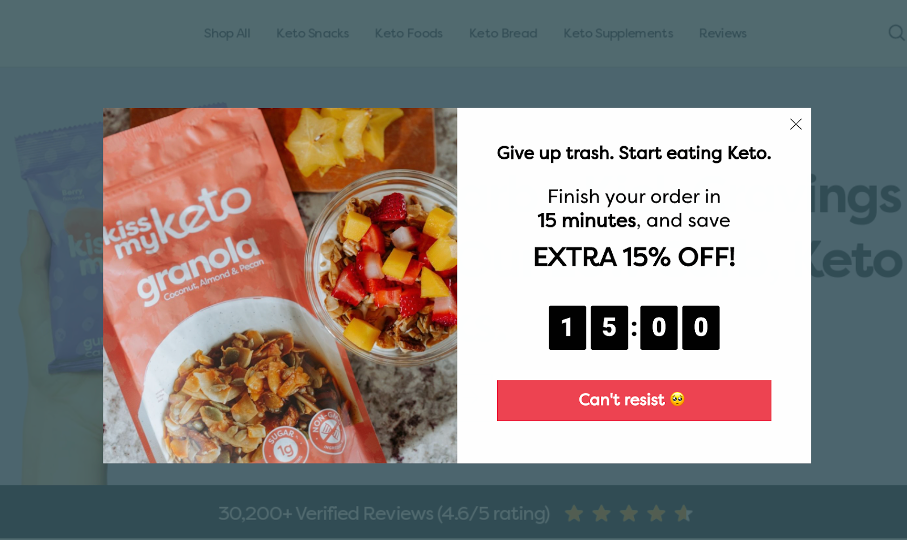
Kiss My Keto’s countdown popup is another prime example of creating a sense of urgency. They not only promote a limited-time offer (15% off for 15 minutes) but also utilize persuasive language.
Their main headline, “Give up trash. Start eating Keto,” uses strong language that appeals to the desire for a healthier lifestyle. Additionally, their CTA (call-to-action) button, which says “Can’t resist,” leverages the power of FOMO.
4. Obvi
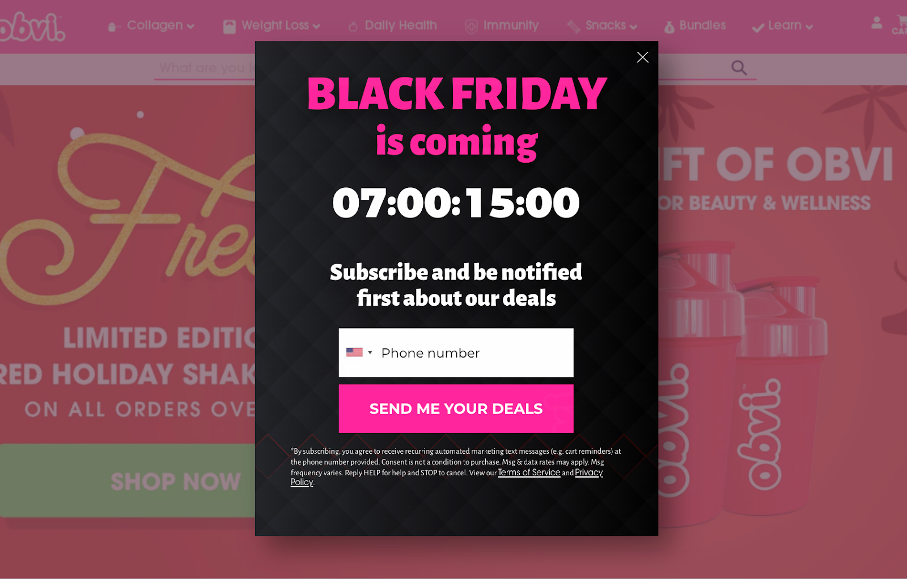
Do you have upcoming sales campaigns you want to promote? Take a cue from Obvi’s conversion rate optimization strategy.
They used a countdown timer popup to capitalize on the Black Friday buzz and boost sales campaigns.
Their popup featured a bold headline announcing the approaching sale and a ticking clock highlighting the remaining time.
They requested phone numbers as part of the signup process. This allowed them to send exclusive deals directly to visitors’ phones via text message marketing.
5. Christopher Cloos
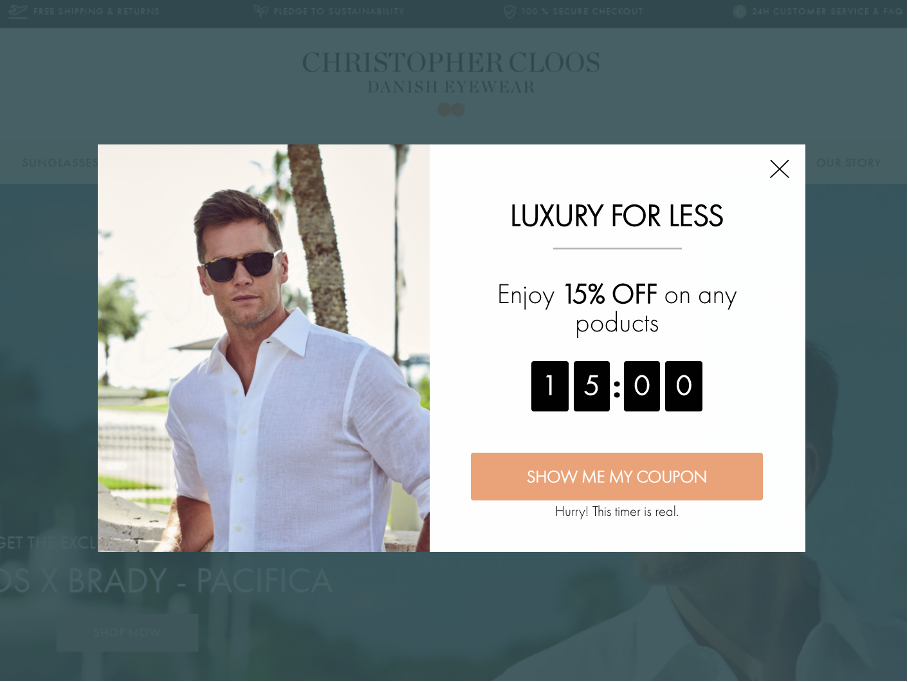
Need visitors to take immediate action? Christopher Cloos nails it. Their popup boasts a clear headline (“Luxury for less”) and a tempting 15% off all products.
A prominent countdown timer creates urgency, while a playful line below the CTA (“Hurry! This timer is real.”) adds a touch of humor. And a bit of a smile might help to convert visitors even more effectively.
6. Natural Vital
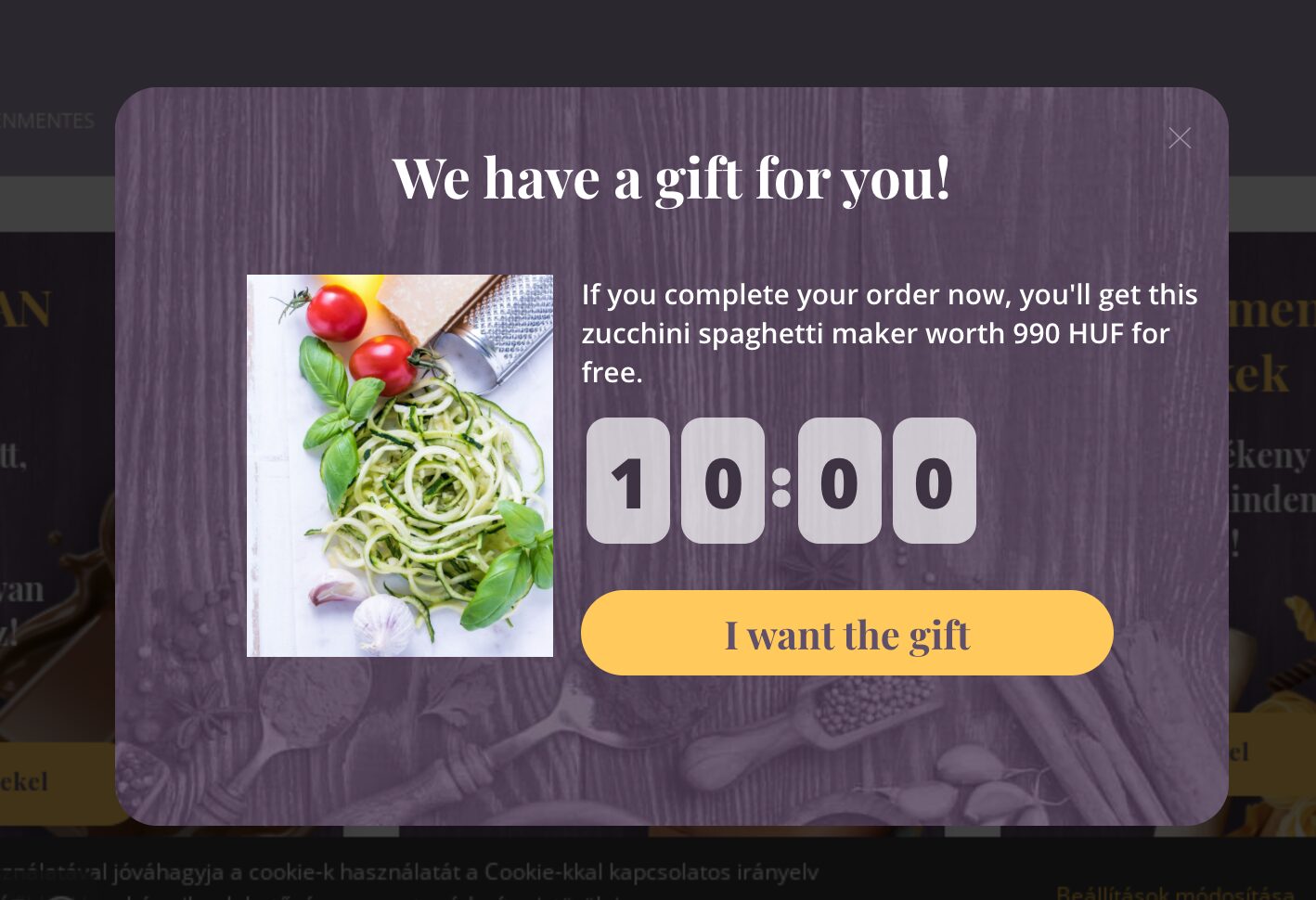
Who doesn’t love a freebie? Natural Vital uses their countdown timer popup to offer a free gift—a zucchini spaghetti maker—with a picture for good measure!
This great incentive not only grabs attention but also motivates visitors to complete their orders before the timer runs out.
All ecommerce marketers could learn a lesson from this clever countdown timer popup.
7. ZooShoo
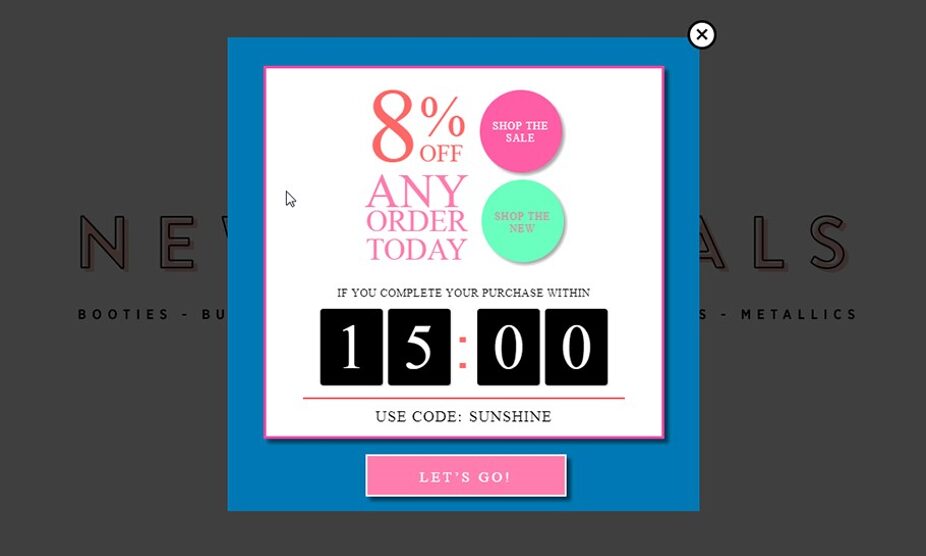
ZooShoo’s colorful popup helps to build excitement. Besides the prominent countdown timer, the vibrant, colorful design is a key element in its effectiveness. The use of bold colors and dynamic graphics ensures that the popup stands out, making it hard for visitors to ignore.
They offer one-day-only sales (“8% on any order today”) and even display the code on the popup for easy use.
Best practices for using countdown popups
Now that you’ve seen a variety of effective countdown timers, it’s time to talk about what they all have in common: they follow best practices.
Here are 6+1 best practices to create high-converting timer popups!
1. Create real urgency
Your countdown timer should represent a genuine deadline. Don’t use fake urgency by resetting the timer for returning visitors. This erodes trust and hurts future conversions.
2. Keep it relevant
Make sure your popup is relevant to the content or offer on the page. A countdown for a shoe sale on a gardening blog? Visitors will likely ignore it. Tailor popups to match your audience’s interests.
3. Show it at the right time
Set your popup to appear at the right moment. Consider triggering them after visitors have spent a while on your page or show exit intent. This ensures they’ve had a chance to engage with your content before encountering the offer.
4. Use a clear and compelling message
Your message should be clear and concise. Let visitors know exactly what they stand to gain (discount, early access) and what they need to do (use a code, sign up). Strong CTAs guide them toward action.
5. Optimize for mobile
Optimize your popups for mobile devices, as many users access websites via smartphones. A popup that doesn’t display correctly can be frustrating, which means that responsive design is crucial.
6. Follow up
Follow up with visitors who show interest in your popup (e.g., fill out a form). Use a reminder sticky bar to keep the offer top of mind, fostering engagement and keeping the momentum going.
+1 Bonus tip
Use a variety of popup templates to match your brand and campaign goals. From flash sales to product launches, countdown timers are a proven way to increase sales and drive urgency. Choose a template that will showcase your limited-time offer in the best light and encourage immediate action.
How to create a countdown timer popup
Now it’s time for your action plan: a step-by-step guide on how to create campaigns that fit your brand and convert even more visitors. Ready to create your own countdown timer popups? Get on board!
Step 1: Choose the right popup tool
Your initial step should be choosing the right popup tool. Look for one with user-friendly features and a wide variety of templates, like OptiMonk.
OptiMonk is a user-friendly tool that helps you design popups to boost engagement and conversions. You can create a free account now by clicking here.
Step 2: Choose a template
OptiMonk offers a variety of pre-designed countdown timer popup templates. Browse through the options and pick a popup template that aligns with your brand and the message you want to convey.
Step 3: Customize your popup
Make the popup feel like a natural extension of your website. Use OptiMonk’s user-friendly editor to tailor the design elements of your countdown popup (colors, fonts, images) to match your website’s aesthetic.
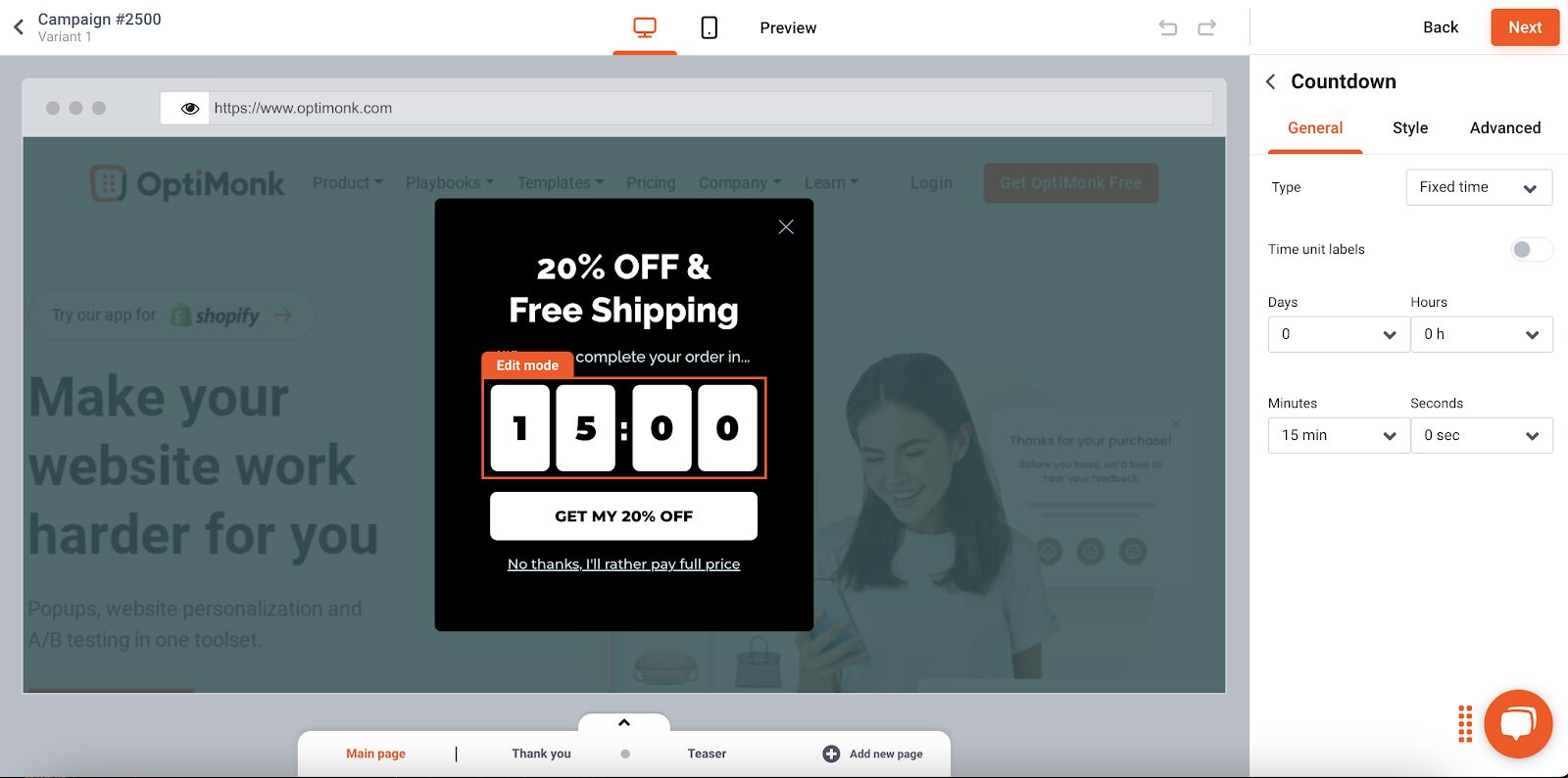
Step 4: Set up your countdown timer
Decide what type of countdown you want to use: a fixed time (e.g., “4 hours remaining”) or a fixed date (e.g., “Sale ends on July 4th”).
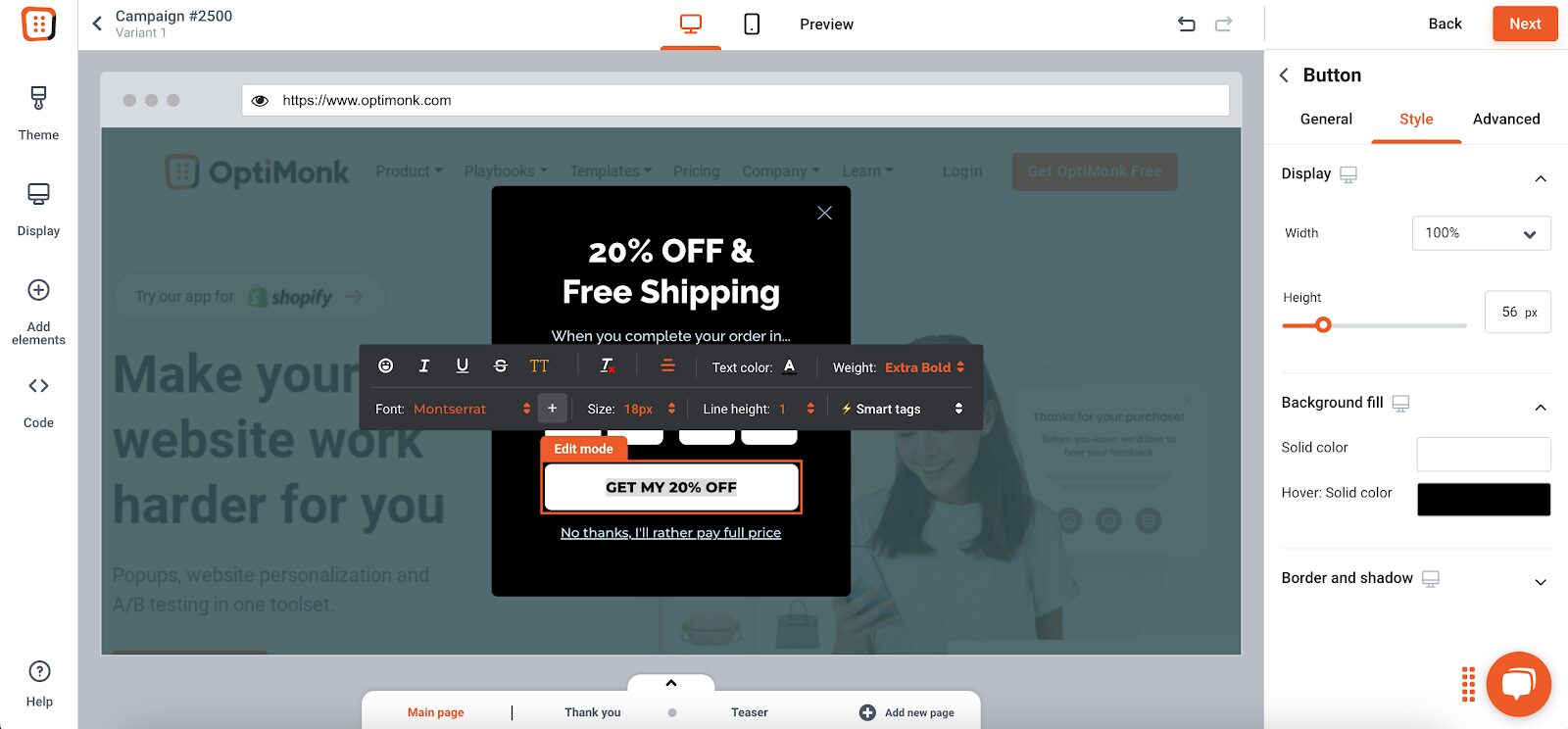
Step 5: Set triggering and targeting rules
Decide when and where your popup will appear. OptiMonk allows you to set specific triggers, such as when a visitor shows exit intent or after they’ve spent a certain amount of time on a page.
You can also target specific pages or audience segments. Consider using display rules to ensure the popup doesn’t overwhelm visitors.
Step 6: Launch your campaign
It’s time to show your campaign to the world! Once you’re happy with the design and settings, activate your popup campaign within OptiMonk. The popup will begin displaying on your website based on the rules you defined.
Step 7: Add a reminder
For time-sensitive offers, consider implementing a separate reminder campaign within OptiMonk. This involves a simple notification bar to rermind users about their coupons.
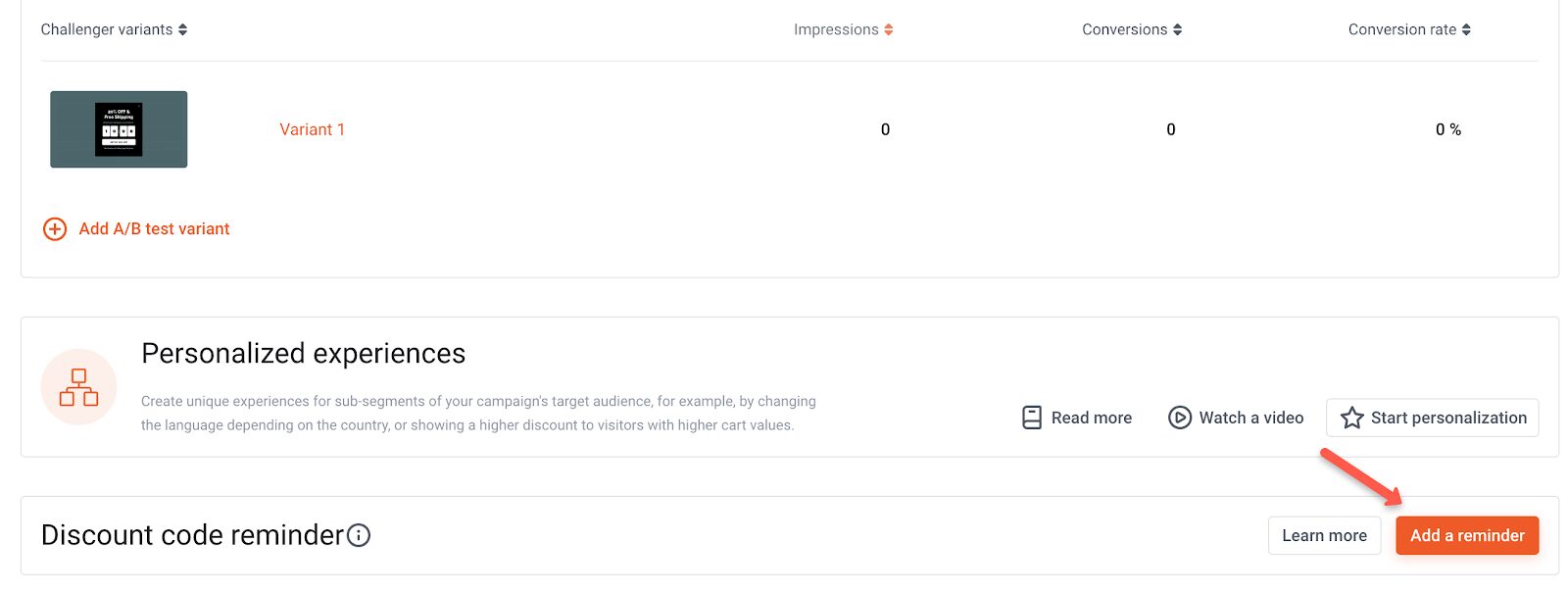
FAQ
When should I use the countdown timer popup?
Countdown timers are a good option for promoting limited-time offers, such as flash sales, early access to new products, or special discounts. They can also be used to create a sense of urgency for events like webinars, product launches, or special sales.
Are there any drawbacks to using countdown timers?
Yes, there are a few potential drawbacks to using countdown timers.
- They can be annoying if used too frequently.
- They can create a sense of false urgency, eroding trust and killing your popup conversions.
- They may not be effective for all types of offers.
By following the best practices outlined in this article, you can avoid these drawbacks and achieve the results you want from your countdown timer popups.
Wrapping up
Hopefully, you now see why countdown popups can be an important part of your marketing arsenal.
By using them strategically and creatively, you can generate excitement, encourage action, and ultimately achieve your website’s goals.
Remember to prioritize clarity, avoid overuse, and consider alternatives for certain offers. When implemented thoughtfully, countdown timers can be an amazing way to connect with your audience and drive successful marketing campaigns.
Ready to take your website conversions to the next level? OptiMonk can be a great ally in crafting effective countdown timers, and you can start for free by creating your account today!
Migration has never been easier
We made switching a no-brainer with our free, white-glove onboarding service so you can get started in the blink of an eye.
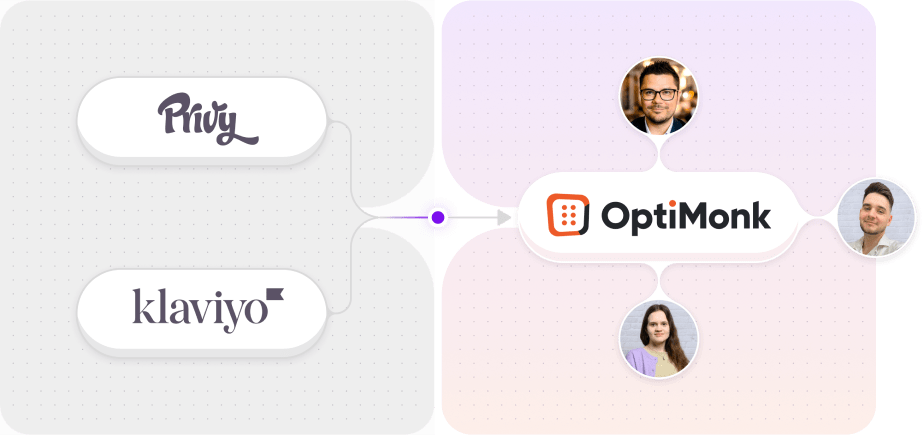
What should you do next?
Thanks for reading till the end. Here are 4 ways we can help you grow your business:
Boost conversions with proven use cases
Explore our Use Case Library, filled with actionable personalization examples and step-by-step guides to unlock your website's full potential. Check out Use Case Library
Create a free OptiMonk account
Create a free OptiMonk account and easily get started with popups and conversion rate optimization. Get OptiMonk free
Get advice from a CRO expert
Schedule a personalized discovery call with one of our experts to explore how OptiMonk can help you grow your business. Book a demo
Join our weekly newsletter
Real CRO insights & marketing tips. No fluff. Straight to your inbox. Subscribe now
Barbara Bartucz
- Posted in
- Conversion
Partner with us
- © OptiMonk. All rights reserved!
- Terms of Use
- Privacy Policy
- Cookie Policy
Product updates: January Release 2025

